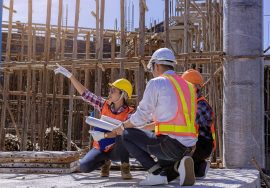
Building Performance Verification: Ensuring Efficiency, Safety
Building Performance Verification: The Key to Reliable and Efficient Facilities
In construction and facility management, building performance verification is the process of validating that all building systems perform as intended—both before and after handover. This quality assurance step ensures energy efficiency, safety, and occupant comfort while reducing operational risks.
Whether it’s a commercial tower, manufacturing unit, or residential complex, performance verification is critical for long-term asset reliability.
What is Building Performance Verification?
Building performance verification involves systematic testing, measurement, and documentation of all major systems, including:
-
HVAC (Heating, Ventilation, and Air Conditioning)
-
Electrical and lighting systems
-
Plumbing and water supply networks
-
Fire and life safety systems
-
Building automation systems
This process ensures that operational goals, regulatory standards, and sustainability targets are met.
When Should Building Performance Verification Be Done?
Performance verification can take place during multiple phases:
-
Pre-Handover Phase – To detect and correct defects before occupancy.
-
Post-Handover Phase – To fine-tune systems based on actual usage patterns.
-
Annual Review – As part of ongoing facility management integration.
The Building Performance Verification Process
1. Planning and Documentation Review
-
Check design documents and installation records.
-
Verify that performance requirements are clearly defined.
2. Functional Testing
-
Operate systems under normal and peak loads.
-
Test emergency responses such as fire alarms and backup power.
3. Monitoring and Data Analysis
-
Use smart meters and IoT sensors to monitor energy consumption and system response.
-
Compare real-time data against design benchmarks.
4. Reporting and Handover
-
Document results in compliance reports.
-
Provide corrective action plans for any performance gaps.
Benefits of Building Performance Verification
-
Operational Efficiency – Lower energy bills through optimized system performance.
-
Safety Assurance – Confirm life safety systems are fully operational.
-
Regulatory Compliance – Meet building codes and environmental standards.
-
Warranty Protection – Verify installation quality to claim warranties if needed.
-
Occupant Satisfaction – Improve comfort levels through precise system tuning.

Role in Sustainability and Green Building Certification
Performance verification is an essential step for achieving certifications like LEED, IGBC, and GRIHA in India. By ensuring that systems operate at peak efficiency, it directly contributes to energy savings and reduced carbon footprint.
For example, IGBC emphasizes continuous performance monitoring to maintain sustainable building ratings.
Best Practices for Building Performance Verification
-
Engage third-party experts to maintain impartiality.
-
Use automated monitoring systems for accurate data capture.
-
Train facility teams on ongoing verification techniques.
-
Schedule periodic re-verification to prevent performance degradation.
Conclusion
Building performance verification is not a one-time task—it’s an ongoing commitment to operational excellence, safety, and sustainability. From commissioning to continuous monitoring, it ensures your building delivers on its design promise.
Want expert performance verification for your facility?
Contact AMS India for professional post-handover performance testing and compliance audits.
Read more related articles to enhance your knowledge and make informed decisions
Project Cost Management: Control Costs and Maximize Value
Project Budgeting Strategies for Efficient Financial Control








